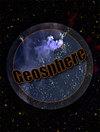Critical workforce skills for bachelor-level geoscientists: An analysis of geoscience job advertisements
IF 1.7
3区 地球科学
Q3 GEOSCIENCES, MULTIDISCIPLINARY
引用次数: 0
Abstract
Understanding the skills bachelor-level geoscientists need to enter the workforce is critical to their success. The goal of this study was to identify the workforce skills that are most requested from a broad range of geoscience employers. We collected 3668 job advertisements for bachelor-level geoscientists and used a case-insensitive, code-matching function in Matlab to determine the skills geoscience employers seek. Written communication (67%), field skills (63%), planning (53%), and driving (51%) were most frequently requested. Field skills and data collection were frequently found together in the ads. Written communication skills were common regardless of occupation. Quantitative skills were requested less frequently (23%) but were usually mentioned several times in the ads that did request them, signaling their importance for certain jobs. Some geoscience-specific skills were rarely found, such as temporal understanding (5%) and systems thinking (0%). We also subdivided field skills into individual tasks and ranked them by employer demand. Site assessments and evaluations, unspecified field tasks, and monitoring were the most frequently requested field skills. This study presents the geoscience community with a picture of the skills sought by employers of bachelor-level geoscientists and provides departments and programs with data they can use to assess their curricula for workforce preparation.学士级地球科学家的关键劳动力技能:对地球科学招聘广告的分析
了解学士级地球科学家进入职场所需的技能对他们的成功至关重要。这项研究的目的是确定各种地球科学雇主最需要的劳动力技能。我们收集了3668个学士级地球科学家的招聘广告,并在Matlab中使用不区分大小写的代码匹配函数来确定地球科学雇主寻求的技能。书面交流(67%)、实地技能(63%)、计划(53%)和驾驶(51%)是最常见的要求。现场技能和数据收集经常出现在广告中。无论职业如何,书面沟通技能都很常见。定量技能被要求的频率较低(23%),但通常在要求它们的广告中被多次提及,这表明它们对某些工作的重要性。一些地球科学特有的技能很少被发现,如时间理解(5%)和系统思维(0%)。我们还将现场技能细分为个人任务,并根据雇主需求对其进行排名。现场评估和评价、未指明的实地任务和监测是最经常需要的实地技能。这项研究向地球科学界介绍了学士级地球科学家雇主所寻求的技能,并为各部门和项目提供了可用于评估其劳动力准备课程的数据。
本文章由计算机程序翻译,如有差异,请以英文原文为准。
求助全文
约1分钟内获得全文
求助全文
来源期刊

Geosphere
地学-地球科学综合
CiteScore
4.40
自引率
12.00%
发文量
71
审稿时长
6-12 weeks
期刊介绍:
Geosphere is GSA''s ambitious, online-only publication that addresses the growing need for timely publication of research results, data, software, and educational developments in ways that cannot be addressed by traditional formats. The journal''s rigorously peer-reviewed, high-quality research papers target an international audience in all geoscience fields. Its innovative format encourages extensive use of color, animations, interactivity, and oversize figures (maps, cross sections, etc.), and provides easy access to resources such as GIS databases, data archives, and modeling results. Geosphere''s broad scope and variety of contributions is a refreshing addition to traditional journals.
 求助内容:
求助内容: 应助结果提醒方式:
应助结果提醒方式:


